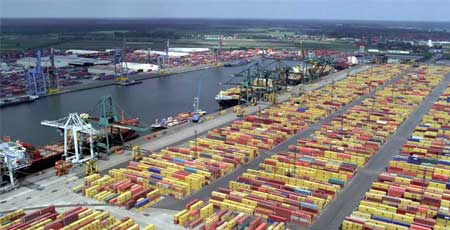Home > Port of Antwerp sets new benchmarks
Port of Antwerp sets new benchmarks
BY Our Correspondent14 July 2016 1:23 AM GMT

X
Our Correspondent14 July 2016 1:23 AM GMT
July 14, 2016: The Port of Antwerp handled a freight volume of 108,317,922 tonnes in the first six months of this year, 3.6 percent more than in the same period last year. The container volume in TEU expanded by 4.4 percent while liquid bulk grew even more, by 8.4 percent, confirming its position as a leading source of growth in the Port of Antwerp.
The first half year also saw significantly more ultra-large container carriers calling at Antwerp. Whereas the total after the first six months of 2015 stood at 146, this year the equivalent figure was 242, up by an impressive 66 percent. The growth in the category of 13,000 TEU or more was even more spectacular, at 78 percent.
Containers and breakbulk The container volume in tonnes expanded during the first six months by 3.9 percent, finishing at 59,762,977 tonnes. This corresponds to a handling volume of 5,047,468 TEU, up 4.4 percent. The ro/ro volume for its part declined by 3.7 percent to 2,347,444 tonnes. On the other hand the number of cars handled rose by 1.3 percent to 620,332. The volume of conventional breakbulk was also down, by 1.7 percent, to 4,752,222 tonnes, despite an increased volume of steel (up 12.3 percent to 3,748,613 tonnes). The fruit volume remained stable, although there was an increase in the amount of containerised fruit. The lower volume of paper and pulp also weighed on the handling figures. Liquid bulk The volume of liquid bulk rose during the first six months by 8.4 percent to 35,403,953 tonnes. In the case of oil derivatives the volume during the first half of this year came to 26,190,485 tonnes, an increase of 13.9 percent.
The increasing amount of liquid tank storage capacity in the port of Antwerp further helped to consolidate the position of the petrochemical complex. Antwerp owes its attractiveness for international investors to its very central position in Europe together with its strong concentration of chemical companies and the availability of highly trained employees. Dry bulk The amount of dry bulk handled during the first six months came to 6,051,326 tonnes, a drop of 14.7 percent compared with the same period in 2015. The declining demand for coal continued during the past quarter, which over the full six months produced a negative result for this freight category, down by 55.0 percent to 372,714 tonnes. The lower volume of ore (down 18.9 percent to 996,034 tonnes) further pushed the six-monthly result for dry bulk into negative figures.
Next Story




